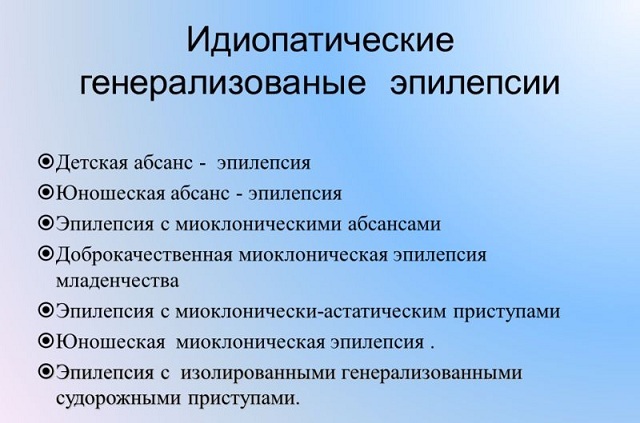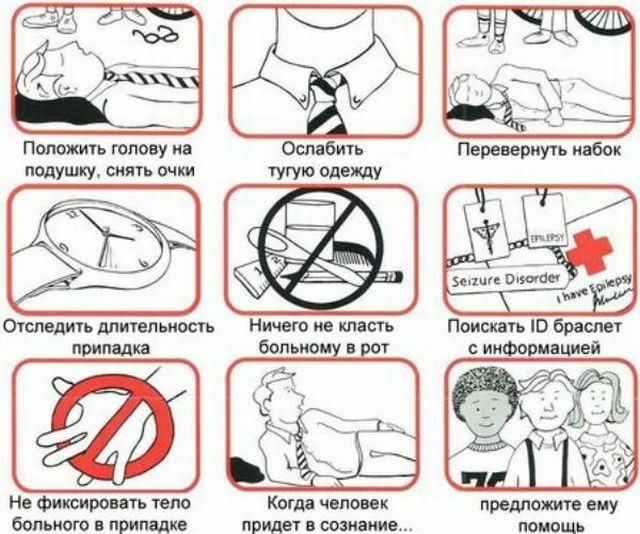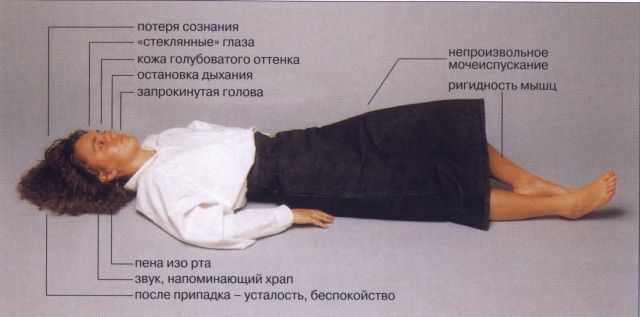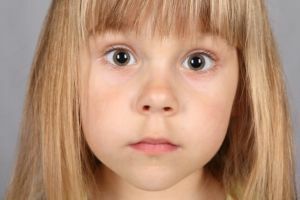 Epilepsy is a disease that has many forms and types, and accordingly, various manifestations. Absence form of epilepsy occurs only in childhood and adolescence. It manifests itself without seizures. And because of this diagnosis of the disease is difficult.
Epilepsy is a disease that has many forms and types, and accordingly, various manifestations. Absence form of epilepsy occurs only in childhood and adolescence. It manifests itself without seizures. And because of this diagnosis of the disease is difficult.
Such uncharacteristic attacks are called absences. In this case, the child is unconscious, but does not fall. And after the attack, he can not remember what happened to him, moreover, the child continues to do what he was busy as if nothing had happened. Seizures last for several seconds, and usually manifest in the morning and evening.
Parents often do not pay too much attention to such attacks, as they take this for the child's particular characteristics, fatigue, brooding, etc.
According to statistics, most often absense epilepsy manifests itself at the age of 6-7 years, mainly in girls. And with a favorable current in 5-6 years, it disappears.
Causes of the disease
Absence epilepsy is a pathology, the main cause of which is a genetic predisposition. More precisely, anomalies of the central nervous system of an innate character, which develop due to a hereditary factor.
To such congenital pathologies include various violations of fetal development of the fetus, the formation of cysts, as well as hydrocephalus and macrocephaly.
It should be noted that the absence occurs due to the disturbed process of excitation and inhibition of the nervous system. Such disorders can occur with hormonal failures, craniocerebral injuries, with the presence of infections in the body and intoxication.
Factors provoking the onset of an epileptic seizure:
- violation of the daily regimen( lack of sleep, excessive activity, etc.);
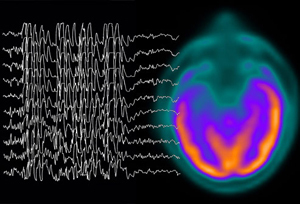
- external factors in the form of bright flashes of light, overheating, hypothermia;
- heavy physical and mental loads;
- stress;
- acclimatization;
- loads of visual nature. For example, these are television programs, cartoons, computer games, which are characterized by rapid change of frames, image brightness;
- lack of vitamins in the body.
All these factors can provoke excessive excitation of the nervous system.
There are 2 types of absence epilepsy:
- nursery;
- youthful.
Pediatric form
Pediatric form is considered to be epilepsy, which occurred between the ages of 2 and 8 years. The disease that occurred during this period is considered benign. Since quite often it disappears after this, that is, the patient enters remission before the age of 20 or is completely cured.
This form of absent epilepsy in rare cases can have harbingers in the form of headache, bouts of nausea, excessive sweating, rapid heartbeat, a child may exhibit aggression, panic.
Children with epilepsy of this type are restless, and quite often they are hyperactive. It should be noted that this disease does not provoke the reduction of intellectual abilities at this stage.
Time to continue the attack can be - 2-30 seconds.
Juvenile form of
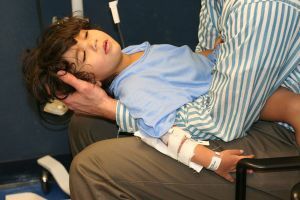 Juvenile absenas epilepsy proceeds more complexly than children's. Often it occurs in children 10-12 years. In this case, seizures last from 30 seconds to several minutes, and their frequency also increases.
Juvenile absenas epilepsy proceeds more complexly than children's. Often it occurs in children 10-12 years. In this case, seizures last from 30 seconds to several minutes, and their frequency also increases.
They can occur 10-15 times or more, sometimes it happens up to 100 times a day. With this form, already during the epileptic attack there is a convulsive syndrome.
Symptomatic of
disorder Absence epilepsy is characterized by short seizures that begin suddenly. Symptoms of childhood epilepsy:
- Sudden interruption of activity. The child abruptly interrupts completely or slows down his actions, then he remains motionless for a while. The look is empty, focused on one point.
- During an attack of , the child will not be distracted by the , and when everything is over the child continues to do what he did before, or continues to tell from the moment he stopped.
- The child does not remember anything , and will not be able to answer questions about what he felt at the time of the attack.
- Paleness of skin .
- Possible involuntary urination .
- When the attack occurs, the child does not fall .
In juvenile form, seizures occur with convulsions. In the severe course of the disease, eyelid myoclonia may occur. This is a syndrome in which uncontrolled blinking occurs. Quite often, if there is such a symptom, then mental retardation is diagnosed.
Diagnosis and prescribing of therapy
In the diagnosis of absent epilepsy, MRI will not yield any results, as no significant changes will be seen. And the electroencephalogram reveals the generalized peak-wave activity.
Treatment of absent-minded epilepsy depends on the cause of the disease caused by the child. For example, if epilepsy arose due to a traumatic brain injury, a cyst, an infection, then primarily a treatment directed at these primary pathologies is prescribed.
Assign anti-inflammatory, antibacterial drugs, etc. If there are neoplasms, then a surgical operation is performed to remove them. 
Next, a neurologist prescribes therapy against epileptic seizures. These are antiepileptic drugs. Often appointed Vilproat, Suxilep, etc. Sometimes in severe forms, a combination of drugs is needed.
With absent epilepsy, preparations of the valproate group are prescribed. These are anticonvulsants, which today are often used to treat and prevent seizures. They are able to control and quite complex generalized seizures. Often, ethosuximide is prescribed with this group. Strengthen the effect of this therapy can be taken by Lamotrigine.
If all these drugs do not have the proper therapeutic effect, then children are prescribed Clobazam, Clonazepam, Acetazolaid.
It is contraindicated to take carbamazepine, Tiagabine and Vigabatrin for children. These drugs increase the manifestation of absences.
Complications and prophylaxis
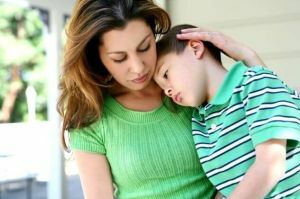 With incorrect treatment, absent epilepsy progresses and soon develops into severe forms of the disease. Rarely, this type of epilepsy leaves complications in the form of mental disability for life.
With incorrect treatment, absent epilepsy progresses and soon develops into severe forms of the disease. Rarely, this type of epilepsy leaves complications in the form of mental disability for life.
According to statistics, about 60% of patients with absences with drug therapy achieve a positive effect. And as a result, they achieve a final remission.
As a rule, seizures cease to appear in children after puberty, provided the therapy. If the prescribed medication has not produced a result, then juvenile myoclonic epilepsy can manifest itself. And sometimes in such cases even pharmacoresistance develops.
Further generalized seizures occur, for which a severe course is characteristic.
Preventive measures against absences:
- enter the correct mode of the day;
- to exclude as much as possible factors that provoke an attack( stress, hypothermia, bright light, etc.);
- the child should eat healthy food, if the doctor has appointed a special diet, then it is necessary to adhere to it unswervingly;
- should have moderate physical and mental loads. If the child has epilepsy, then this does not mean that it is necessary to limit the completely motor activity;
- should protect the child from too bright cartoons and computer games.
Parents should carefully monitor the behavior of their child. With any changes, you need to consult a doctor.

